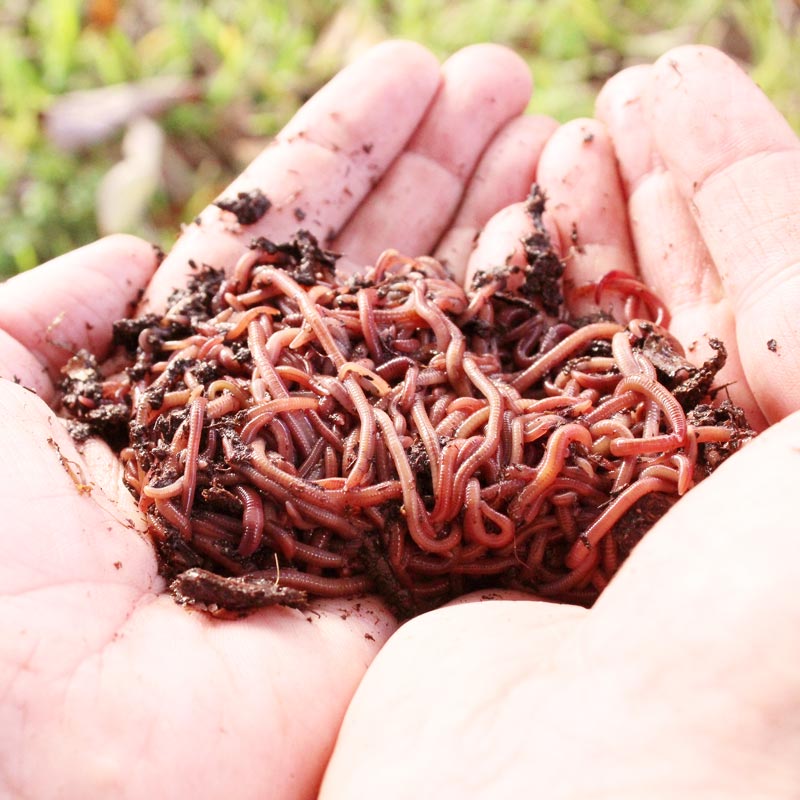Discover Why Lake Hickory Bait is the Best Choice for Lawn Care Solutions
Discover Why Lake Hickory Bait is the Best Choice for Lawn Care Solutions
Blog Article
Red Wigglers: The Unsung Heroes of Organic Waste Recycling
Red wigglers, or Eisenia fetida, act as vital representatives in the natural waste reusing procedure, changing disposed of products right into beneficial vermicompost. Their reliable breakdown of raw material not only enhances soil quality but also contributes to sustainable waste management practices. As the globe increasingly seeks solutions to combat waste accumulation and improve farming performance, recognizing the duty of these worms comes to be essential. What mechanisms allow them to thrive in garden compost settings, and just how can they be successfully made use of in both property and industrial settings? Exploring these questions reveals the broader implications of vermicomposting in our eco-friendly landscape.
What Are Red Wigglers?
The impressive durability of red wigglers, scientifically recognized as Eisenia fetida, highlights their essential duty in organic waste recycling. These small, reddish-brown earthworms are commonly discovered in decomposing organic matter, such as compost stacks and manure heaps. Lake Hickory Bait. Unlike various other earthworm species, red wigglers grow in nutrient-rich atmospheres and are very effective at damaging down organic products, making them important for vermicomposting

(Lake Hickory Bait)Along with their function in waste decrease, red wigglers add to soil health and wellness by improving dirt framework and aeration via their burrowing activities (Lake Hickory Bait). Their visibility in composting systems not only improves disintegration prices however also promotes a sustainable technique to waste management, showing their value in eco-friendly preservation efforts
Advantages of Composting With Worms
Composting with worms, particularly red wigglers, offers various advantages that improve both waste administration and dirt wellness. These worms successfully damage down natural waste, transforming it right into nutrient-rich vermicompost that improves dirt. This process speeds up decay, enabling for a much faster recycling of cooking area scraps and various other organic materials compared to standard composting techniques.
Furthermore, the vermicompost created by red wigglers is including valuable microbes, which help improve soil framework, oygenation, and wetness retention. This enhances the total health of plants, promoting strenuous development and enhanced yields in yards and farming settings. In addition, using worms in composting decreases the production of greenhouse gases, such as methane, adding to an extra sustainable waste monitoring system.

Just How to Start Vermicomposting
Establishing a vermicomposting system is a simple procedure that can produce substantial advantages for both waste management and soil enrichment. To begin, select an appropriate container, such as a plastic container or wood box, with appropriate air flow openings to make certain correct airflow. The dimensions should ideally be around 2 feet by 3 feet, allowing ample space for the worms to flourish.
Next, prepare bedding material, which can consist of shredded newspaper, cardboard, or coconut coir. This bedding needs to be dampened to produce a suitable habitat for the worms. When the bed linen remains in area, present red wigglers (Eisenia fetida) into the bin, typically around one extra pound of worms for every square official site foot of area.
Adhering to the placement of worms, include organic waste, such as fruit and veggie scraps, coffee premises, and smashed eggshells. Avoid adding dairy, meat, or oils, as these can develop smells and draw in insects. Lastly, position the container in a shaded, temperature-controlled location to preserve optimal conditions for worm task. With these actions, you will properly start a vermicomposting system that contributes to sustainable waste administration and enhances your soil.
Preserving a Healthy And Balanced Worm Bin
(Red Wiggler Express)Keeping a worm container prospering requires normal interest and treatment to guarantee the wellness of the red wigglers and the effectiveness of the composting procedure. Appropriate upkeep begins with monitoring the dampness levels; the container ought to be wet but not saturated. An excellent guideline is to maintain a consistency comparable to a wrung-out sponge.
Delicately blending the bedding and food scraps every few weeks stops compaction and makes certain that all worms have accessibility to oxygen. Additionally, it is essential to feed the worms properly.
If the container comes to be also hot or cold, the worms may end up being stressed out. By diligently managing these aspects, one can preserve a durable and productive worm bin.
Influence On Lasting Living
The effective maintenance of a worm bin not only profits the health of red wigglers but likewise contributes dramatically to sustainable living techniques. By recycling organic waste, such as kitchen scraps and yard particles, red wigglers assist divert significant quantities of material from land fills. This decrease in waste not only lowers greenhouse gas exhausts however also decreases the environmental burden related to waste administration.
Furthermore, the spreadings created by red wigglers work as a nutrient-rich natural fertilizer, boosting soil wellness and promoting plant development. This natural choice to chemical fertilizers sustains sustainable agriculture and horticulture practices, reducing reliance on artificial inputs that can hurt communities. In addition, worm composting promotes recognition of waste administration, urging individuals and neighborhoods to adopt even more lasting routines.

Verdict
In summary, red wigglers act as vital contributors to natural waste recycling via their efficient decay of natural materials. Their ability to produce nutrient-rich vermicompost boosts dirt health and wellness and supports sustainable farming techniques. By incorporating vermicomposting into waste management approaches, people and communities can significantly decrease waste while advertising ecological sustainability. The function of Eisenia fetida in promoting healthy and balanced ecosystems underscores the value of these organisms in attaining sustainable living and enhancing soil fertility.
Report this page